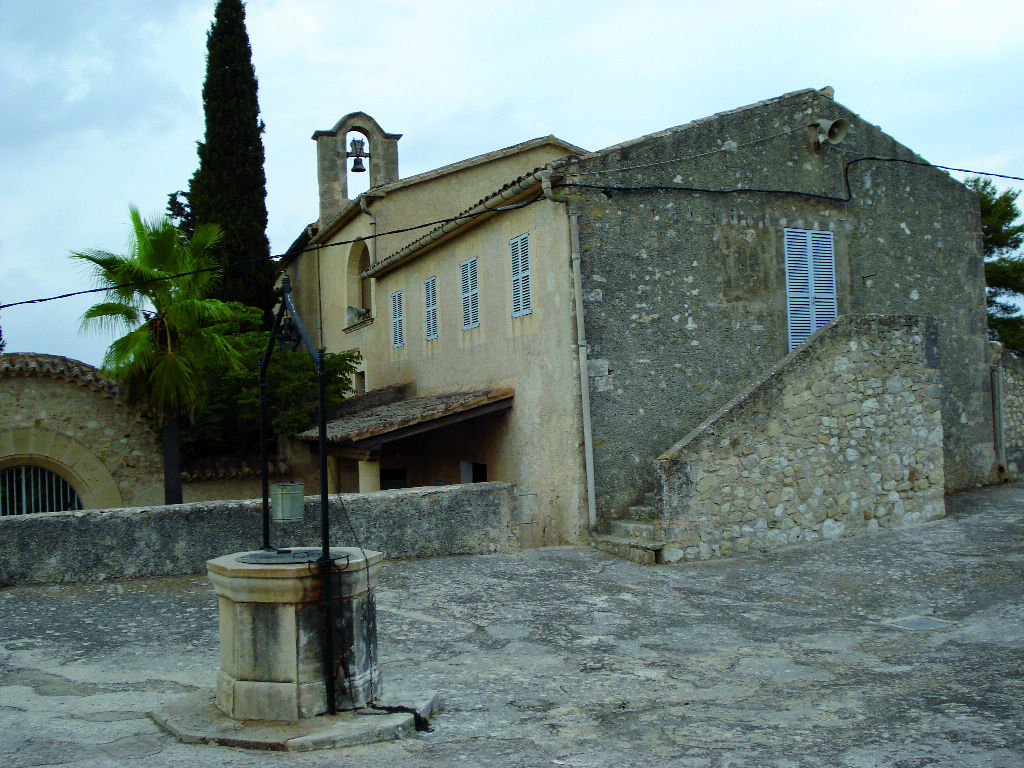Son Juny Nature Trail
Description

Walking among thousand-year-old olive trees
Sant Joan is a traditionally agricultural municipality whose origins date back to the Muslim period, with a population of some 1,900 people and belonging to the region known as Pla de Mallorca or Plains of Mallorca; it is situated in the middle of the island, at an altitude of about 150 m above sea level.
The nature trail of Son Juny starts in the center of the town of Sant Joan (at Paseo Joan Mas i Mates) and, after 500 m, reaches the shrine of Nuestra Señora de la Consolación. The route has no significant slopes and the surface of the road has been upgraded through the use of rustic stone slabs in order to facilitate traffic flow. On each side of the trail, a small wall - about 50 cm high - has been built in dry stone (without any mortar to join the blocks together).

The object if this mode of construction is to replicate the style of old carriage roads made of stone since the thirteenth century. This kind of dry stone building has been traditionally used throughout the Mediterranean, and it is employed all through the island of Mallorca in the building of separating walls for farms and properties, traditional dwellings, terraced areas, roads, etc.
Dry stone buildings have been recorded in the Balearic Islands since the thirteenth century, although they began to be fully developed only from the fifteenth century, and the abandonment of agricultural areas and the development of mass tourism during the 1960s led to a decline in their use in the twentieth century. Now many of these old structures have been granted a protection status throughout the archipelago.
All along the route of the nature trail Camino de Son Juny, lamps have been installed to illuminate the trail, and there are also waste bins; both at the beginning and at the end of the route, an interpretative board about the shrine of Nuestra Señora de la Consolación has been installed by the Ministry of the Environment and the city council of Sant Joan.

Motor vehicles cannot be driven on the trail thanks to a set of bollards strategically installed in the middle of the road – both at the entrance and at the exit – which do however allow the passage of bicycles. Given the characteristics of the route, with gentle slopes, flat surfaces, not very long and starting in the very center of Sant Joan, the trail is suitable for people with reduced mobility. Also, at the end of the trail, in the shrine of Nuestra Señora de la Consolación, there is a large car park that facilitates access to the area.
The nature trail runs for 510 m surrounded by pines (Pinus halepensis), mastic trees (Pistacia lentiscus) and rock roses (Cistus albidus), with a few scattered European olive trees (Olea europaea) and carob trees (Ceratonia siliqua), forming a small tract of woodland that stands out against the cropland that dominates the area.
All along the trail, hikers can enjoy magnificent views of the rural scenery typical of Pla de Mallorca, consisting of wheat fields and small gardens and orchards in those holdings where pumps are available to extract underground water. Further on we can see the shape of the village of Sant Joan, with highlights such as the profile of the church of San Juan Bautista and the windmill of Martí Gran, which stands next to a tall tower sitting on a hill and has been converted into a restaurant. Both in the urban area of Sant Joan and in its surroundings we can visit many places of interest such as the parish church, mills, public wells, etc.
Sites of interest
Profile

MIDE (Method for the Information of Excursions)
Featured
Further information
Santuario de la Consolación
The end of the nature trail of Son Juny is connected with an asphalted drive that leads to the Santuario de la Consolación, located some 100m away. The origins of this shrine date back to the thirteenth century, although it was restored between 1755 and 1780 and, again, between 1959 and 1966. Inside there is a sixteenth century image of the Virgin that was restored in 1917.
There is also a prayer chapel next to a large cistern, on top of which there is a well, which serves as a viewpoint and is reached by a stone staircase built on a wide square.



